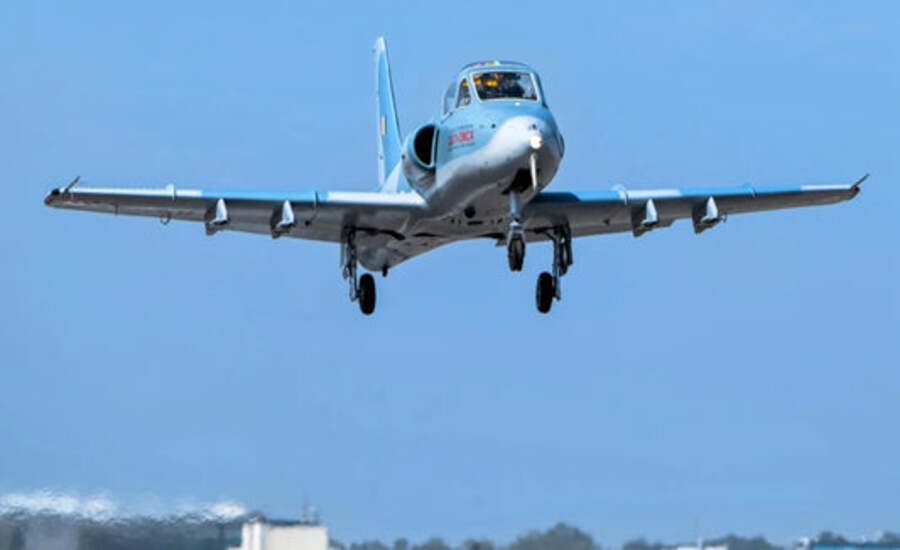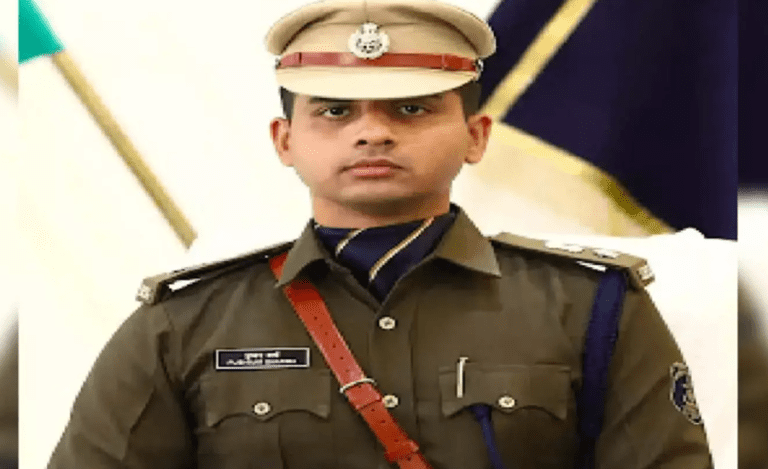New Delhi: India’s indigenous Combat Air Teaming System (CATS) Warrior has demonstrated impressive performance across various simulated mission profiles including air escort, Suppression and Destruction of Enemy Air Defences (SEAD/DEAD), Intelligence, Surveillance and Reconnaissance (ISR), and precision-strike operations.
The advanced trials showcase the platform’s maturity in networked manned-unmanned teaming with the TEJAS MK-1A and the upcoming AMCA fighter jets.
HAL CATS Warrior: Seamless Integration with Manned Fighters
The simulations validated seamless sensor-fusion and data-link compatibility, enabling shared radar, electro-optical/infrared (EO/IR) and electronic warfare (EW) situational feeds with its manned companion aircraft.
Operating under supervisory command with autonomous capabilities, the Warrior successfully executed waypoint-based attack missions and demonstrated dynamic re-routing in contested electronic environments. This adaptive autonomy proves critical for next-generation swarm engagements in modern warfare scenarios.
Enhanced Design for Superior Performance
Recent engineering refinements reveal substantial improvements to the platform’s combat capabilities.
Design updates show a marked increase in Maximum Take-Off Weight (MTOW), supporting greater fuel capacity and payload flexibility for extended missions
HAL engineers have optimized the twin-intake configuration to enhance low-observable stealth performance while accommodating additional internal weapons bays. These modifications significantly expand mission endurance and survivability for deep-strike operations in denied airspace.
HAL CATS Warrior: Versatile Payload Configuration
The CATS Warrior now features modular payload options that include:
– Loitering munitions for precision strikes
– Smart glide bombs for standoff attacks
– Anti-radiation missiles for SEAD operations
– Compact electronic warfare pods for jamming missions
This flexibility enables the platform to perform both offensive and protective roles within complex combat networks.
Advanced Digital Architecture of HAL CATS Warrior
The platform’s digital architecture supports coordinated SEAD sweeps, precision targeting, and stand-in jamming capabilities, providing manned fighters with expanded operational reach and risk mitigation in hostile airspace.
Future Development Roadmap
HAL’s development roadmap envisions heavier stealth derivatives of the Warrior featuring advanced composite materials, radar-absorbing coatings, and higher-thrust indigenous turbofan integration .
HAL leadership has confirmed that the program remains on schedule for the unmanned aerial vehicle’s maiden flight in 2027, following the completion of critical engine integration tests.
These advanced variants will complement AMCA squadrons as low-cost, attritable adjuncts for air-defence suppression, decoy projection, and autonomous strike missions.
Engine Development Progress
On January 11, 2025, Hindustan Aeronautics Limited successfully conducted the engine ground run of a full-scale demonstrator of the aircraft, marking a crucial milestone in the CATS Warrior program.
The CATS Warrior employs two HAL PTAE-W engines derived from the PTAE-7 engine developed by Aero Engine Research, configured in a twin turbojet arrangement.
British aerospace company Rolls-Royce has proposed a partnership with HAL to jointly develop and manufacture a new engine for the CATS Warrior, following an increase in its maximum takeoff weight from 1.3 tons to 2.1 tons.
Combat Capabilities and Mission Profiles
The Warrior will accomplish tasks such as scouting, absorbing enemy fire, attacking targets with internal and external weapons, or sacrificing itself by crashing into high-value targets when necessary.
It can fly missions within a combat radius of 350 km and return, while for long-range missions with an 800 km combat radius, it may sacrifice itself crashing into the target .
The drone can penetrate enemy airspace up to 700 km, making it a game-changer in aerial warfare with stealth capabilities that reduce detectability by enemy radars and air defence systems.
Aero India 2025 Display
The CATS Warrior took centre stage at Aero India 2025 in Bengaluru as a full-scale prototype, with its highly anticipated maiden flight scheduled for later this year.
The state-owned Hindustan Aeronautics Limited displayed the prototype at the ongoing Aero India 2025, with the system set to undergo further ground testing and taxi trials before entering flight mode..
Strategic Significance of HAL CATS Warrior for Indian Air Force
The introduction of the CATS Warrior marks a significant shift in India’s aerial combat strategy, enhancing operational efficiency while prioritizing pilot safety .
The development comes at a crucial time, as the Indian Air Force faces a shortfall in active fighter squadrons—currently at 31 against the sanctioned 42—amidst an ageing fleet and delayed inductions.
The CATS initiative comprises multiple platforms designed for high-altitude surveillance and autonomous deep-penetration precision strikes from standoff distances while minimizing pilot risk.
“This milestone is not just a testament to our technical prowess but also to our commitment to enhancing the strategic capabilities of our armed forces,” Dr. Sunil stated, urging the team to expedite the process so that the CATS-Warrior can take to the skies as soon as possible.
Atmanirbhar Bharat Initiative
The CATS Warrior emerged as a pivotal component in India’s evolving air combat ecosystem under the Atmanirbhar Bharat (self-reliant India) initiative. The platform combines affordability, survivability, and tactical sophistication in one networked system.
Read Also: India Takes a Giant Leap with ‘KAATIL’ — A Jet-Powered Loitering Munition Built for Future Wars
The program represents India’s commitment to indigenous defence technology development, reducing dependency on foreign unmanned combat aerial vehicles while establishing the nation as a drone manufacturing hub.
Different Collaborative Development Ecosystem for HAL CATS Warrior
HAL is the leading project agency in collaboration with National Aerospace Laboratories (NAL), Centre for Artificial Intelligence and Robotics (CAIR) of DRDO, and NewSpace Research & Technologies..
CAIR serves as the main subcontractor to develop advanced combat algorithms for artificially intelligent, autonomous target acquisition systems. This collaborative approach leverages India’s best defence research capabilities for cutting-edge technology development.
Way Forward
The successful combat simulations position the CATS Warrior as India’s answer to global loyal wingman programs like Australia’s Boeing MQ-28 Ghost Bat and the United States’ XQ-58 Valkyrie.
As the program progresses toward its 2027 maiden flight, the CATS Warrior is expected to play a critical role in modernizing the Indian Air Force, ensuring it remains at the forefront of next-generation warfare capabilities.
The platform’s demonstrated performance in manned-unmanned teaming represents a quantum leap in India’s indigenous defence technology capabilities, marking the nation’s entry into the elite club of countries developing advanced autonomous combat systems.



























